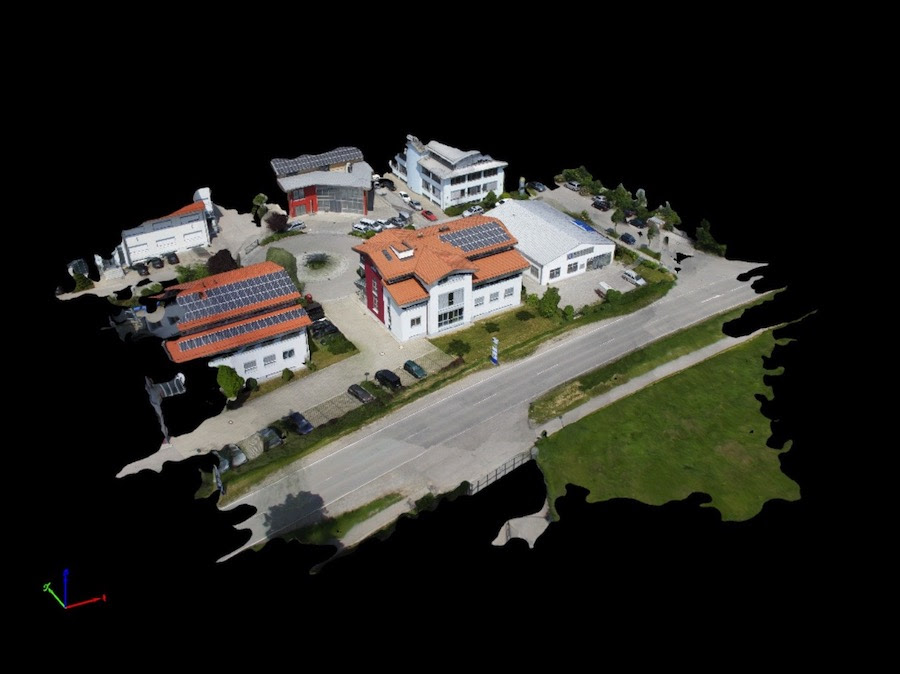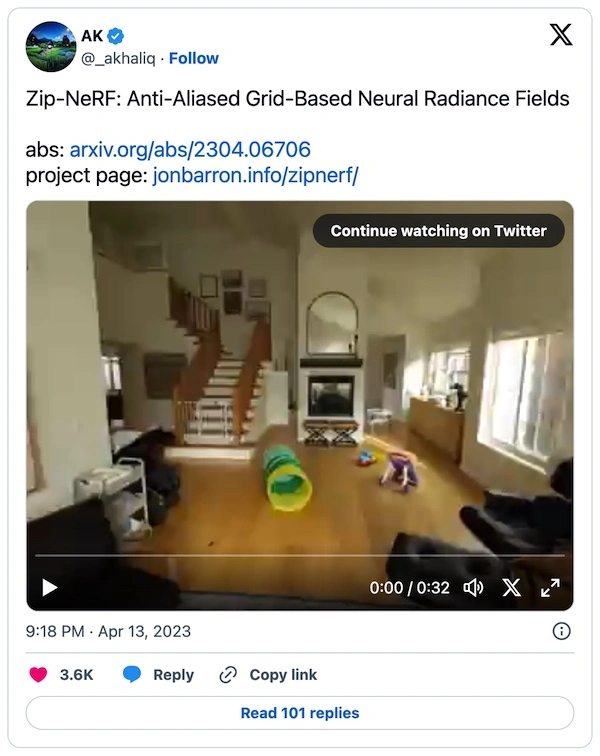AI, 3D and the Future of Digital Media in Real Estate
Tech advances in artificial intelligence and 3D will change the marketing landscape for real estate — but maybe not as much as you’ve heard, and maybe not as much as you might think.
AI, NeRFs, 3D, ODM, Matterport, Immersion, the Metaverse — there’s a lot of new technology out there. This is a brief guide on some of the most promising new tech, as well as a conclusion on the long term viability of any of these, and whether or not anything stands to be disrupted.
NeRFs
Everyone is talking AI right now. In imaging, we have the promise of Neural Radiance Fields or NeRFs — 3D AI-powered interpolations of 2D images. Similar to how Large Language Models (LLMs) like ChatGPT are trained on trillions of data points and are able to interpolate speech by way of neural networks, NeRFs are generated after an AI program has been trained on a series of 2D stills or video. The NeRF is an interpolation, an educated guess, into a 3D image. The 3D aspects of a NeRF are predicted, though very accurately.
AI interpolations of this data could “fill in the gaps” of 3D renders like Matterports. Instead of improving resolution and user experience with better cameras, better images, the data can be interpolated, predicted and fully digitized — resulting in truly virtual representations of spaces, much as a physical “world” is represented and rendered in a video game. All of this presents really exciting possibilities — imagine exploring the great room of a luxury property in virtual reality, and instantly placing your furnishings in the space. Or, imagine being able to instantly “remodel” an existing space as you stand in the center of it, experiencing it at different times of day, as different light streams in through the virtual windows, with total realism. We’re not too far from this reality.
ODM … Matterport for Exteriors

All of the talk here so far has been on the virtual display of interior spaces. But what about exterior ones? Many of our clients frequently list large land tracts, or luxury estates where the land itself is a major component of the listing. Matterports and similar media presentations aren’t designed to render and display “digital twins” of exterior spaces. But, an innovative new system has been developed to leverage aerial drone imaging to create 3D representations of land — comprehensive exterior complements to Matterport interiors, complete with lots of data and metrics useful for engineering and agricultural applications too: Open Drone Map (ODM). ODM 3D renders are displayed in web-embeddable user interfaces, just like Matterport tours, and allow a user the ability to explore exteriors from any point in a virtual, 3-dimensional grid. Users can measure property boundaries and acreages accurately, and “interact” with the land in ways the potential of which haven’t fully yet been explored. Just like Matterport, ODM is very, very cool tech.
So … will any of this represent a market disruption?
Matterport tours arrived on the scene 12 years ago. They continue to grow in popularity, even as their replacements (or at least, their successors) are visible on the horizon. We are continually introducing Matterport to new customers who’ve never encountered it before. We feel that the overall consumer environment for Matterport has just now matured to the point that these tours are really viable. People can now view these effectively on their mobile and personal devices that are just now technically capable of providing a seamless user experience. The same thing goes for ODM — it’s really just now arriving on the scene in products and applications that are practical and usable.
It’s taken years for 3D tech to become market-ready. It will still be years before the ridiculously-high resolution screens or virtual reality headsets or gigabit internet connections necessary to experience the technical wonders promised by AI applications to 3D are relatively common, let alone standard.
Practical Realities
Facebook (aka Meta) is discovering with its failed pivot into the “Metaverse” that sometimes people don’t want an immersive experience. Sometimes they want a passive one; on a 2 dimensional screen that they can passively look at while they simultaneously listen to a podcast or make sandwiches for the kids. There’s also an undeniable marketing reality here. Sometimes we don’t want users to have full access to every nook and cranny, to every room, to the unfinished basement with boxes stacked to the ceiling. PHOTO and VIDEO allow us to present what we want to present, to highlight what should really be highlighted and in the case of VIDEO especially, to tell a story with our visual presentation — to motivate and inspire.
So, in conclusion, all of this is great. It’s exciting. We love Matterports, and we love ODMs. They’re amazing and valuable complements and additions to our clients’ existing marketing efforts. But these technical wonders have always been secondary to the basics, to photo and video. AI improvements to 3D technology won’t change the fundamental marketing reality for real estate. The amazing tech developments visible on the horizon promise to expand the options available to us to present and market a physical space, but ultimately the power to direct attention, to tell a story and invoke an emotional response — things PHOTO and especially VIDEO excel at — will mean these two forms of media will remain primary for years to come.



